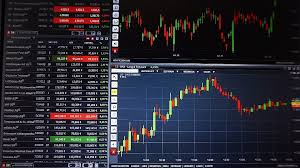
Choosing the Right Trading Platforms for Forex
In the fast-paced world of forex trading, having the right trading platform can make all the difference. Traders need a platform that offers robust tools and features to facilitate effective trading. This article will delve into the key aspects of trading platforms for forex, the features to look for, and how to choose the one that best fits your trading style. For more insights on trading, visit trading platforms for forex https://seed2019.io/.
Understanding Forex Trading Platforms
A forex trading platform is a software application that allows traders to buy and sell currencies. These platforms connect traders to the global forex market, providing tools for trading, technical analysis, and other essential functions. They can be web-based, desktop-based, or mobile-based, giving traders the flexibility to trade from anywhere at any time.
Key Features of Forex Trading Platforms
When selecting a forex trading platform, it’s essential to consider several critical features:
- User Interface: A clean and intuitive interface makes it easier for both beginner and experienced traders to navigate the platform.
- Execution Speed: Fast execution is crucial in forex trading to capitalize on volatile price movements.
- Charting Tools: Advanced charting capabilities help traders analyze market trends and make informed decisions.
- Technical Indicators: Access to a variety of technical indicators allows traders to develop and implement strategies.
- Automated Trading: Many platforms offer options for automated trading or algorithmic trading, which can streamline trading processes.
- Security Features: Ensure that the platform has robust security measures to protect user data and funds.
- Mobile Accessibility: A good mobile app ensures that traders can stay connected and manage trades on the go.
- Customer Support: Efficient customer support is vital in case users encounter issues or have questions.
Types of Forex Trading Platforms
Forex trading platforms can broadly be classified into three categories:
1. Proprietary Platforms
These are platforms developed by trading firms. They often feature unique tools and integrations, providing a customized experience. Examples include TD Ameritrade’s thinkorswim and Interactive Brokers’ Trader Workstation.
2. Third-Party Platforms
Third-party platforms are independent of trading firms and can be used with various brokers. Two widely recognized third-party platforms are MetaTrader 4 (MT4) and MetaTrader 5 (MT5), both offering extensive functionalities for traders, including automated trading.
3. Web-Based Platforms
These platforms enable traders to access the forex market via a web browser, eliminating the need for software installation. This accessibility is convenient for traders who need to switch devices or prefer a straightforward interface.
Choosing the Right Forex Trading Platform
Selecting the right trading platform can significantly impact your trading success. Here are some tips to help you make an informed decision:
1. Assess Your Trading Style

Your trading style (scalping, day trading, swing trading, etc.) will determine what features you need. Scalpers may require platforms with quick execution and advanced charting features, while long-term traders may prioritize research tools and fundamental analysis.
2. Research Broker Compatibility
Not all platforms work with every broker. Ensure the platform you choose is compatible with the brokers you intend to use. Research various brokers and see what platforms they offer.
3. Read Reviews and Ratings
Look for user reviews and expert ratings of the trading platforms you’re considering. Feedback from other traders can provide insights into the platform’s performance and reliability.
4. Test with a Demo Account
Most platforms offer demo accounts that allow you to practice trading with virtual money. This is an excellent way to familiarize yourself with the platform’s features and determine if it meets your needs without any financial risk.
5. Understand Fees and Commissions
Different platforms have varying fee structures, including spreads, commissions, and overnight fees. Make sure to understand all the costs associated with trading on the platform to avoid surprises later on.
Popular Forex Trading Platforms
Here are some of the most popular forex trading platforms currently available:
1. MetaTrader 4 (MT4)
MT4 is one of the most widely used trading platforms in the world. It offers extensive charting capabilities, a variety of technical indicators, and support for automated trading through Expert Advisors (EAs). It is particularly popular among forex traders.
2. MetaTrader 5 (MT5)
MT5 is the successor to MT4 and includes additional features like more timeframes, an improved trading interface, and support for more asset classes, including stocks and commodities.
3. cTrader
cTrader is known for its user-friendly interface and advanced algorithmic trading capabilities. It provides a variety of tools for both beginner and experienced traders, including one-click trading and a range of order types.
4. NinjaTrader
NinjaTrader is especially popular among futures and forex traders. Its charting and analysis tools are highly regarded, and it also supports automated trading strategies.
Conclusion
Choosing the right trading platform for forex is a critical step in your trading journey. With numerous options available, it’s essential to assess your trading goals, preferred features, and broker compatibility. By understanding the various types of platforms and the key features they offer, you can make a more informed decision that aligns with your trading style. Remember to leverage demo accounts to test platforms before committing real capital, ensuring that you find the perfect fit for your forex trading journey.
